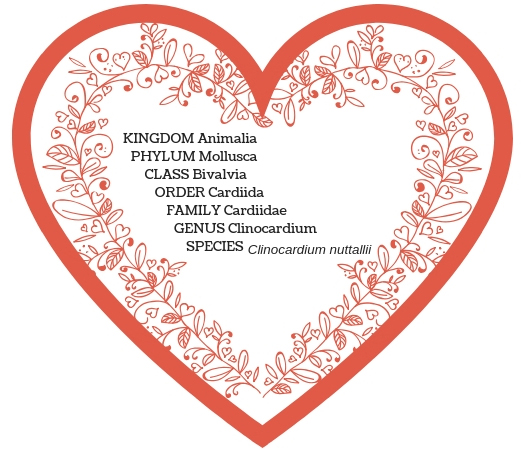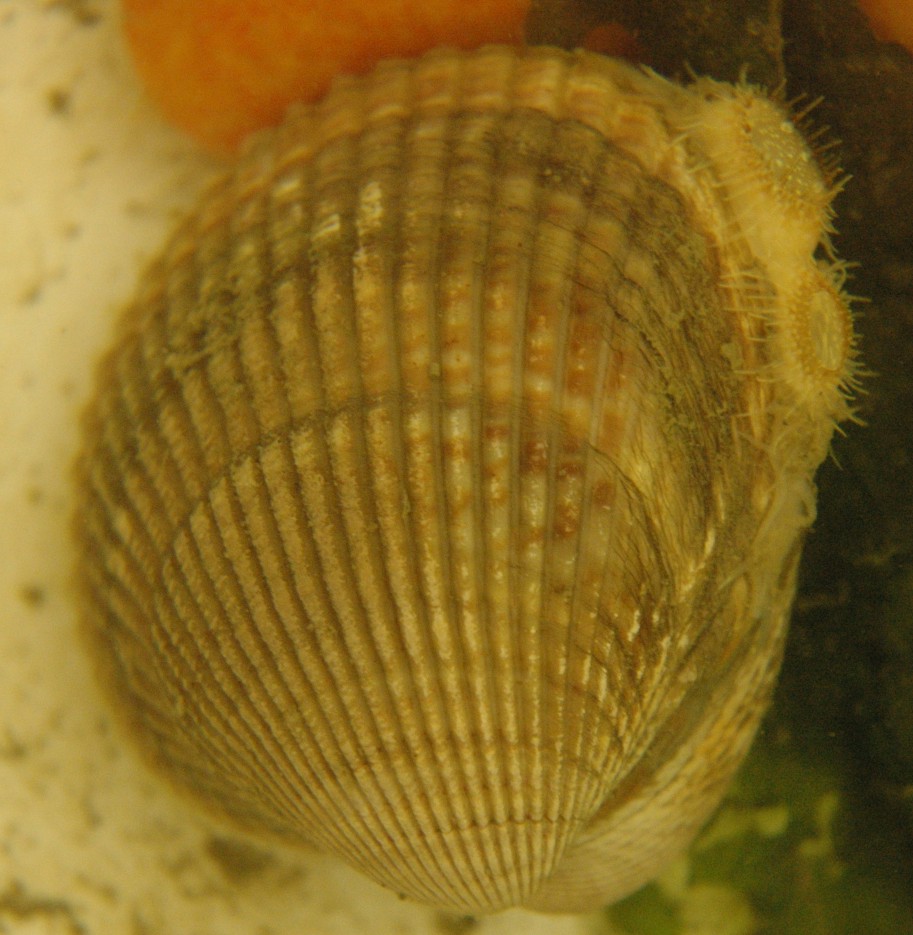Left: Front view and side view of a small Clinocardium nuttallii specimen.
Right: Side view of Clinocardium nuttallii. Photo courtesy of Dave Cowles, wallawalla.edu.
Big-hearted
Quit playing games with my heart
How is the heart cockle so good at telling when predators are close? The secret lies in its mantle, or internal body wall, which has a fringe of tentacles with sensory organs that are able to detect the scents of predatory sea stars.
Heavy heart
Down the tubes
A heart cockle pumps water through its siphons
The key to your heart
If you’re still not impressed by the heart cockle’s abilities, you might find it irresistible in another way – as a tasty morsel on your dinner plate! Although they are not commercially harvested, heart cockles make good targets for recreational shellfish diggers because they bury themselves very shallowly and are easy to dig by hand. When you go to enjoy your catch, don’t be surprised if you find a tiny crab inside; the pea crab, Pinnixa faba, loves the heart cockle too, and occasionally makes its home inside its protective, inviting shell.
Critter of the month
Our benthic taxonomists, Dany and Angela, are scientists who identify and count the benthic (sediment-dwelling) organisms in our samples as part of our Marine Sediment Monitoring Program. We are tracking the numbers and types of species we see in order to understand the health of Puget Sound and to detect any changes over time.
Dany and Angela share their discoveries by bringing us a Benthic Critter of the Month. These posts will give you a peek into the life of Puget Sound’s least-known inhabitants. We’ll share details on identification, habitat, life history, and the role each critter plays in the sediment community. Can't get enough benthos? See photos from our Eyes Under Puget Sound collection on Flickr.




